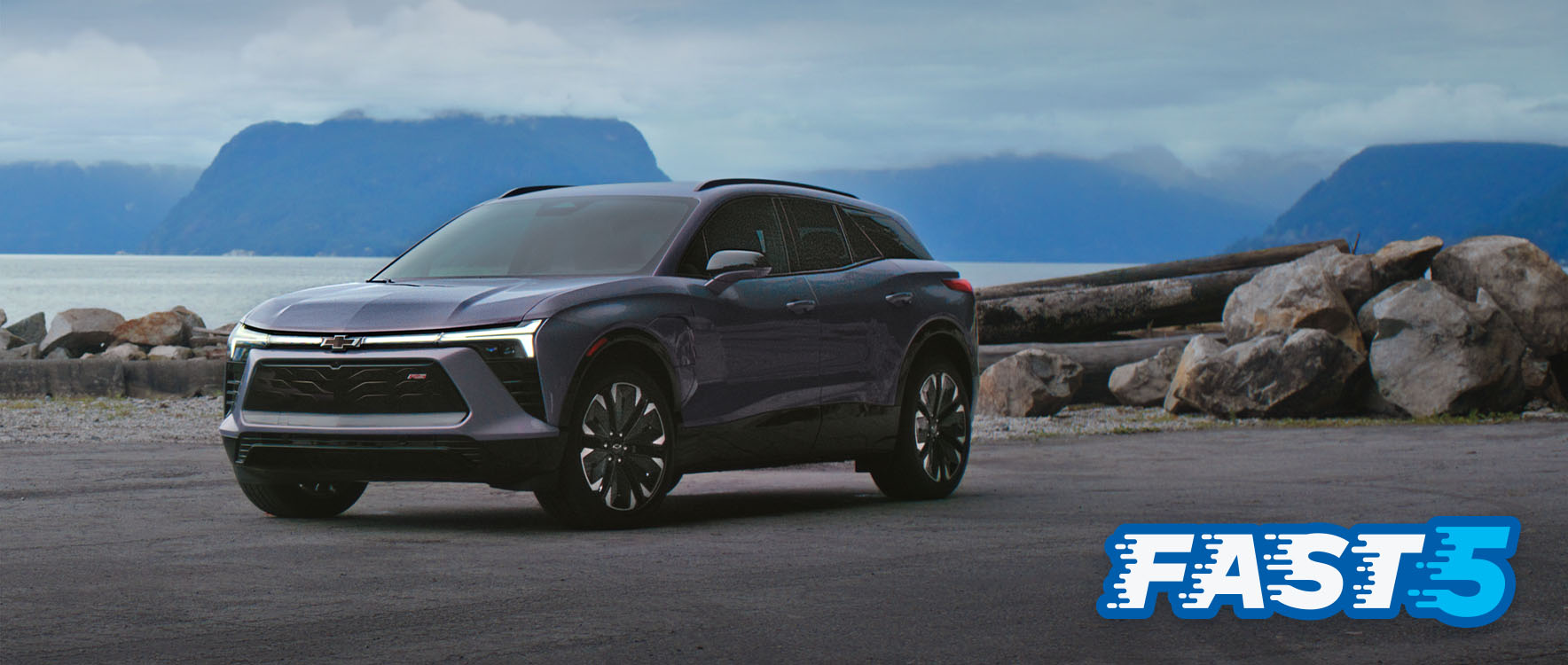- Home
- Financial Resources
- Financial Articles
- Innovating Braking Tech Helps EVs Go the Extra Mile

Innovative Braking Tech Helps EVs Go the Extra Mile
By Nicole Mayer / 03/27/2023 / Electric Vehicles
Advancements in vehicle technology are changing not only what we drive but how we drive. Many electric vehicles employ a technology that enables you to recharge your battery while coming to a stop. This is known as regenerative braking, and you can use it in some GM EVs by lightly braking, while in One-Pedal Driving Mode or by pulling the Regen On Demand paddle on the steering wheel.
What is regenerative braking?
Memories of fifth grade science class tell us that energy cannot be created or destroyed, only converted from one form of energy to another. Regenerative braking uses the vehicle’s electric motor as a generator to transform the vehicle’s kinetic energy (moving energy) into electrical energy. This electrical energy is fed back into the battery to be used again, helping to create greater vehicle efficiency.
How is it different from using traditional hydraulic brakes?
When you apply force to a brake pedal in a traditional braking system, the friction created by the brake pads pressing against the rotors takes the kinetic energy (the forward motion of the vehicle) and converts it into thermal energy (heat). The heat dissipates into the air and serves no further benefit to the vehicle.
When using regenerative braking, rather than stepping on the brake pedal, what would otherwise be “wasted” heat energy is instead turned into electrical energy and sent back to the vehicle’s battery. Taking your foot off the accelerator in a traditional vehicle will make you “coast,” but with an EV in One-Pedal Driving mode, it will engage the electric motor to capture energy and recharge the battery while the vehicle slows down or comes to a stop.
How do I use regenerative braking?
There are three ways to use this braking method in equipped GM electric vehicles: Tapping the brakes, One-Pedal Driving mode and the Regen On Demand paddle.1
- Lightly applying your brakes will use regenerative braking to recharge the battery. Strong braking, like in an emergency, will engage the hydraulic brakes.
- One-Pedal Driving, labeled “OPD” or Low Mode in some models, enables you to use only the accelerator pedal to help control the deceleration of the vehicle and can bring it to a complete stop, in certain conditions, without hitting the brakes. By easing pressure off the throttle, the EV will gradually slow down. If you remove your foot completely, your vehicle will turn on the brake lights and come to a full stop. The speed at which your vehicle slows and stops can be adjusted in your vehicle’s settings.
- Pulling the Regen On Demand paddle on the back of the steering wheel also allows you to slow down the vehicle and bring it to a stop in certain conditions. In this case, the paddle essentially serves as your brakes. This method will slow down the vehicle more quickly than One-Pedal Driving.
Using any of these methods, or using One Pedal Driving and the Regen On demand Paddle together, causes the vehicle to recoup a portion of its battery charge and potentially enables you to extend your vehicle’s range between charges. These methods might take some getting used to, and experts recommend you practice in an empty parking lot before you hit the road.
Note: Using the brake pedal is still the safest, fastest way to come to an immediate stop. One-Pedal Driving and Regen On Demand can be used separately or together in combination.
For more information about electric vehicles, stay plugged in to other things you should know about EVs and check out these debunked charging myths.
1 Features may be limited when the battery temperatures are extremely cold or hot or when the battery is near full charge. Always use the brake pedal when you need to stop immediately. See Owner’s Manual for details. These features are not recommended for use in slippery road conditions (wet, snowy or icy roads) or on steep hills.
By Nicole Mayer, GM Financial
Nicole Mayer is a whisk-taker with a fondness for desserts. From baking to organizing, she’s motivated by trying new things and sharing her knowledge. When she’s not in the kitchen rocking out to ‘80s music, you’ll find her serving up aces on the tennis court.
Related Articles

Fast 5: What You Should Know About EVs
Goodbye gas stations, hello more miles and charging options. Here are five reasons why we love electric cars.
GET THE BUZZ
Charging Ahead: A Guide to Auto Financing for Electric Vehicles
Electric vehicles are growing in popularity. Fully understand the cost of ownership with this Q&A guide that explores lease vs. finance, EV incentives, home charging and other EV-specific finance tips.
DRIVE GREEN